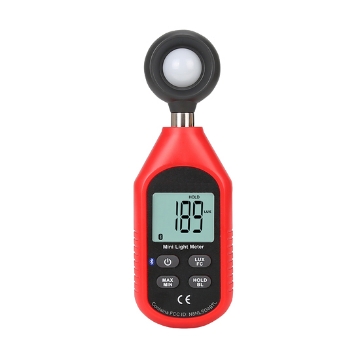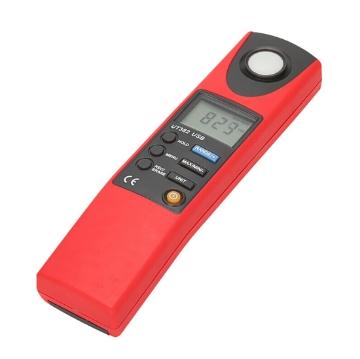Lux Meters
Digital Lux Light Meter with LCD Display, 0~199999 Lux
SISCO-LM-383
Buy a professional digital illuminance meter online, it with a light measurement range of 0 to 199999 lux. sisco digital illuminance meter designed to accurately measure the intensity of light in your environment, allowing you to easily adjust your lighting for optimum visibility and comfort.
$89.56
Digltal Illuminance Meter, 0~199999 Lux
SISCO-LM-383BT
The digital illuminance meter features a compact, lightweight design and durable construction and is available in a range of 0 to 199999 Lux. This illuminance meter is the perfect tool for professionals and hobbyists alike, providing accurate and reliable readings wherever and whenever the user needs them.
$98.76
Handheld Digital Lux Light Meter, 0~199999 Lux
SISCO-LM-383S
The digital lux light meter has a backlit LCD display and measures light from 0 to 199999 Lux, with a maximum and minimum value display for a rich and intuitive reading experience. Illuminance meter is suitable for use in luminaires, industrial and mining industries, laboratories, medical institutions and household applications.
$135.96
Portable Lux Light Meter, 0~20000 Lux
SISCO-LM-382
Buy a lux light meter online, an illuminance measurement range of 0~20000 Lux, it comes with a choice of two measurement units (LUX/FC). This portable illuminance meter is easy to use and provides accurate readings, making it ideal for a wide range of applications.
$199.86
Smart Sensor Lux Light Meter, 0~20000 Lux
SISCO-LM-381
The lux light meter with smart sensor, available in a measuring range of 0 to 20000 Lux, is capable of measuring both natural and artificial light sources. The compact and lightweight design of the digital lux meter makes it easy to carry around, while its robust construction ensures durability even in the harshest environments.
$178.96
A Lux meter is an instrument that measures the degree of illumination of an object, the ratio of the luminous flux on the surface of the object to the area illuminated. Illuminance meters usually consist of a selenium or silicon photocell with a light filter and a microammeter.
sisco lux meters are commonly used in a variety of applications including photography, film production, gardening and building inspections to ensure that the lighting conditions are suitable for the job in hand. They can also be used to assess the performance of artificial lighting systems and to identify areas of low illumination or glare.






